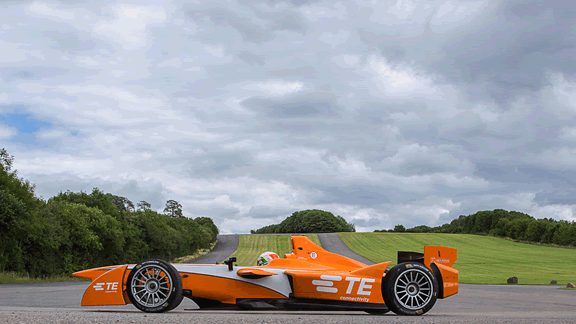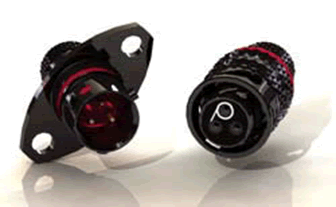Connector Innovation in Autosport
Racing engineers always request solutions that bend the laws of physics, but that’s what makes working in the industry such a challenge.

By its very nature, autosport is not an industry that stands still; just when you think you know what’s happening, a new technology appears and it all moves forward again. Autosport has brought disc brakes, active suspension, data logging, exotic material, and innovation to the world, and in 2014 electric racing was added to that list. Though there seems to be a never-ending series of new stuff, essentially motorsport still provides a pure engineering challenge – get to the finish line first. In order to do that, the vehicle needs to be reliable, but it also must meet the minimum weight the regulations permit, so electrical parts have to withstand huge vibration and heat but still work. Racing engineers always request solutions that bend the laws of physics, but that’s what makes working in the industry such a challenge.
So what’s coming next? Good question: The core demand is more data. Data is the unofficial currency in race series – if you can get the vehicle designed in the virtual world of computational fluid dynamics (CFD) to match what you see in the wind tunnel or at the racetrack, you will have a terrific season. Even with the immense computing power used by race teams today, this is still a fairly unusual event when it actually happens. Collecting data from the real racecar to help engineers fine-tune the car into a winning machine requires sensors that fit in the smallest areas and often have several missions (heat and movement or pressure and temperature, for example). Remember the bit earlier about weight, too? Well the sensor, the wire, and any connectors should also be as small and as light as possible.

The DEUTSCH AS XtraLITE HE Series offers a small and lightweight connector for applications with restricted space.
TE Connectivity supplies all the major race series and teams around the world, and the 2016 season demanded even more ways to save an ounce here and there on the vehicle. For example, panel-mount connectors offer an elliptical flange mount with two fixing holes. This season several F1 teams asked TE to reduce that even further, so the ASX sensor connector is now available with a single mounting position – an indication that every single component is part of the weight-saving challenge.
Another trend in 2016 is 3D printing. Yes, it’s been around for a while now, but F1 teams have printers on their race trucks, so if the factory back at base finds a small aero advantage, they can send the file to the track, print it there, and install it in the car in a few hours. Take a look at those complicated front wings and you can see them evolve during the race event. 3D printing now can build amazingly complex structures in a variety of materials in a short amount of time that even a couple of years ago would have been the stuff of science fiction.
Another racing innovation will be seen in season three of Formula E – the Roborace. This is a support series to the main electric race program with one huge difference – no driver. The vehicles will pit the talents of artificial intelligence (AI) programmers against each other to build cars that not only know how to get round a racetrack, but also can go into battle with other AI vehicles during the event. Car manufacturers are introducing more and more tech on road cars, and this race series can only advance the understanding of what can be helpful on a normal road, too.
So next time you see a race event on TV or, better still, at the track, take a look at the cars a bit more closely – their technology soon may be coming to a vehicle much closer to you.
Paul Webb is global product manager for the DEUTSCH Autosport range of connectors at TE Connectivity.
In-depth research reports from Bishop & Associates covering the automotive connector market include:
World Automotive Connector Market




